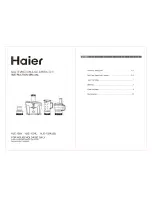
SOI/DT 2006-01 dmm
12/71
599 37 47-13
3.6.3 Total
water
hardness
Total hardness is the sum of the temporary hardness (caused by calcium and magnesium bicarbonates) and
the permanent hardness (caused by sulphates, chlorides and calcium/magnesium nitrates).
Hardness expressed in French degrees (°F) represents the quantity of calcium carbonate, in grammes,
contained in 100 litres of water.
Hardness expressed in German degrees (°D) represents the quantity of calcium oxide, again in
grammes per 100 litres of water.
Conversion of °F - °D:
1 °D = 1,79 °F
1 °F = 0,56 °D
Classification of total water hardness expressed in °F and °D
°F
°D
SOFT
0 – 14
0 - 7
AVERAGE HARDNESS
15 – 26
7 - 14
HARD
27 – 39
14 - 21
VERY HARD
> 40
> 21
Negative effects of hard water:
Reduction in the effectiveness of anionic surface-active agents.
Increase in the quantity of dirt re-deposited.
Increase of residue deposited on the fabrics.
Increase of scale formation on the heating elements.
Hard water may cause the formation of incrustation on mechanical parts, due to the presence of carbonates,
sulphates and alkaline-terrous metal silicates. This may also lead to a considerable reduction in the
efficiency of the appliance, since the reaction is endothermic; in other words, the increase in temperature
favours the formation of carbonates.
The most important of the soluble salts present in water are calcium bicarbonate and magnesium
bicarbonate. When the water is heated to over 60°C, these react and precipitate to form limescale (which
deposits on the fabrics and causes stiffness).
Water softening mechanisms
Hard water can be softened in three ways:
SEQUESTRATION: soluble compounds such as TPF, polycarboxylics, citrates
PRECIPITATION: insoluble compounds such as soaps, sodium carbonate
ION EXCHANGE: insoluble compounds such as zeolites, lamellar silicates.
Water softeners are used only for washing temperatures in excess of 60°C, i.e. when the high temperature
causes the calcium to precipitate.













































